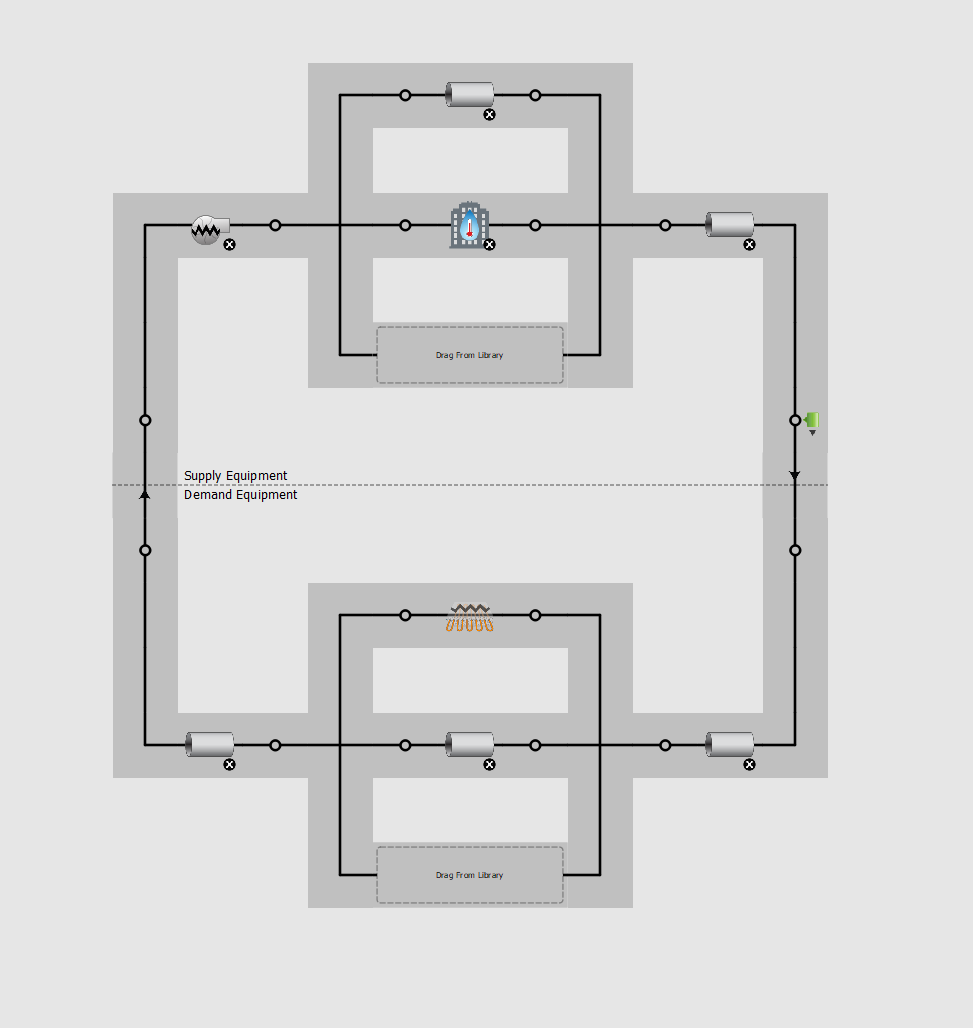High heat demand with Radiant Floor
Hello Everybody,
I have been running a simple simulation of radiant floor heating in a building that is basically a cube with one window on each side (this helps me understand a little bit better how the single components work).
My aim, for now, is to understand how radiant floor heating with an inlet temperature of 50 °C (around 120 °F) would perform in a building that has quite bad insulation (external walls with film U-value = 1.7 W/m2K).
When "ideal loads" are turned on, the results are around 135 kWh/m2, but when I set up floor heating the value goes up to 211 kWh/m2. As a source for hot water, I use District Heating.
Here you can see a picture of the (very simple) system I am using

I know I will see some increase compared to ideal load, but this is almost double. Mainly I will have some resistance from the floor to the thermal zone and some dispersion from the floor to the ground. I have tried to put a highly insulating material underneath the heating layer but it did not work. I even tried to put the heating layer at the outermost section, but the result did not change at all.
I am using a radiant floor with variable flow, temperature for heating set up at 20 °C (68 °F), deck temperature of 50 °C, spacing of the tubing of 15 cm (about 6").
This link contains the OSM file, if anyone wants to take a look at it
https://drive.google.com/file/d/1r2R5...
Is there something completely wrong in what I am doing with floor heating here?
Thank you very much for your answer!
Regards,
Luca





